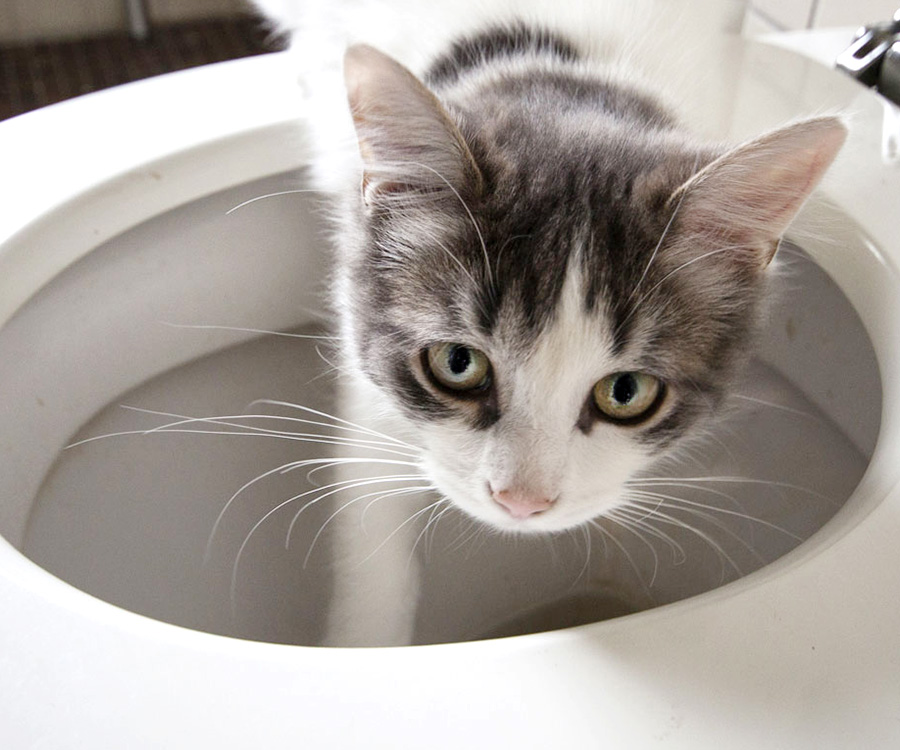Reasons Flushing Cat Poop Down Your Toilet May Cause Problems - Recommendations for Safe Disposal
Reasons Flushing Cat Poop Down Your Toilet May Cause Problems - Recommendations for Safe Disposal
Blog Article
They are making a number of great points regarding How to Dispose of Cat Poop and Litter Without Plastic Bags overall in the article on the next paragraphs.

Intro
As cat owners, it's essential to bear in mind how we take care of our feline good friends' waste. While it may appear hassle-free to flush pet cat poop down the toilet, this technique can have damaging consequences for both the setting and human health.
Environmental Impact
Purging cat poop presents harmful microorganisms and bloodsuckers into the water system, posing a substantial threat to water ecological communities. These contaminants can adversely impact aquatic life and compromise water quality.
Health and wellness Risks
Along with ecological worries, purging cat waste can additionally position wellness risks to people. Cat feces may have Toxoplasma gondii, a parasite that can create toxoplasmosis-- a potentially serious ailment, particularly for expecting females and people with weakened body immune systems.
Alternatives to Flushing
Fortunately, there are safer and a lot more liable methods to throw away pet cat poop. Consider the complying with choices:
1. Scoop and Dispose in Trash
One of the most common technique of taking care of cat poop is to scoop it into a naturally degradable bag and toss it in the garbage. Be sure to use a devoted trash scoop and throw away the waste without delay.
2. Usage Biodegradable Litter
Go with eco-friendly pet cat clutter made from materials such as corn or wheat. These litters are environmentally friendly and can be safely gotten rid of in the trash.
3. Bury in the Yard
If you have a yard, consider burying cat waste in a designated location away from veggie yards and water resources. Make certain to dig deep sufficient to avoid contamination of groundwater.
4. Set Up a Pet Waste Disposal System
Purchase an animal waste disposal system specifically designed for pet cat waste. These systems use enzymes to break down the waste, reducing smell and ecological effect.
Final thought
Accountable pet ownership expands past offering food and shelter-- it also involves correct waste administration. By refraining from flushing pet cat poop down the commode and selecting alternative disposal methods, we can decrease our ecological footprint and safeguard human health and wellness.
Why Can’t I Flush Cat Poop?
It Spreads a Parasite
Cats are frequently infected with a parasite called toxoplasma gondii. The parasite causes an infection called toxoplasmosis. It is usually harmless to cats. The parasite only uses cat poop as a host for its eggs. Otherwise, the cat’s immune system usually keeps the infection at low enough levels to maintain its own health. But it does not stop the develop of eggs. These eggs are tiny and surprisingly tough. They may survive for a year before they begin to grow. But that’s the problem.
Our wastewater system is not designed to deal with toxoplasmosis eggs. Instead, most eggs will flush from your toilet into sewers and wastewater management plants. After the sewage is treated for many other harmful things in it, it is typically released into local rivers, lakes, or oceans. Here, the toxoplasmosis eggs can find new hosts, including starfish, crabs, otters, and many other wildlife. For many, this is a significant risk to their health. Toxoplasmosis can also end up infecting water sources that are important for agriculture, which means our deer, pigs, and sheep can get infected too.
Is There Risk to Humans?
There can be a risk to human life from flushing cat poop down the toilet. If you do so, the parasites from your cat’s poop can end up in shellfish, game animals, or livestock. If this meat is then served raw or undercooked, the people who eat it can get sick.
In fact, according to the CDC, 40 million people in the United States are infected with toxoplasma gondii. They get it from exposure to infected seafood, or from some kind of cat poop contamination, like drinking from a stream that is contaminated or touching anything that has come into contact with cat poop. That includes just cleaning a cat litter box.
Most people who get infected with these parasites will not develop any symptoms. However, for pregnant women or for those with compromised immune systems, the parasite can cause severe health problems.
How to Handle Cat Poop
The best way to handle cat poop is actually to clean the box more often. The eggs that the parasite sheds will not become active until one to five days after the cat poops. That means that if you clean daily, you’re much less likely to come into direct contact with infectious eggs.
That said, always dispose of cat poop in the garbage and not down the toilet. Wash your hands before and after you clean the litter box, and bring the bag of poop right outside to your garbage bins.
https://trenchlesssolutionsusa.com/why-cant-i-flush-cat-poop/

Do you enjoy reading about Don’t flush cat feces down the toilet? Place a review further down. We will be delighted to know your reactions about this blog post. Hoping that you visit us again in the future. Loved our piece of writing? Please share it. Help other people find it. I praise you for your time. Come back soon.
Request A Quote Report this page